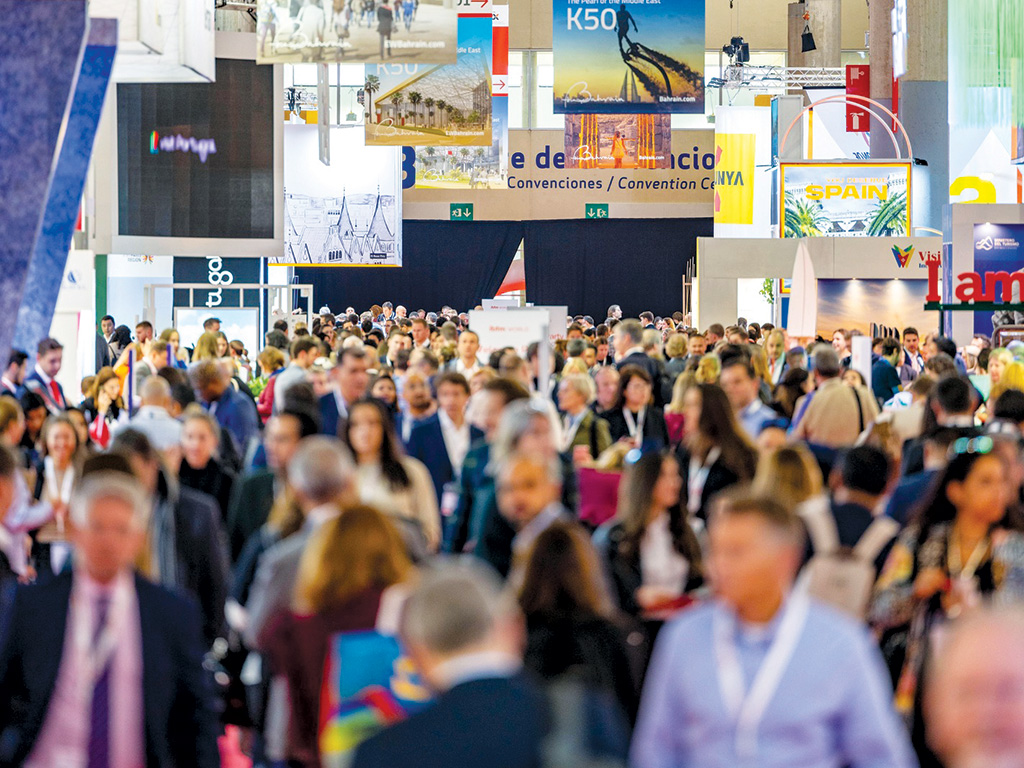

Artificial intelligence tools have already been integrated into the workplace. In the MICE sector, event planners and marketers are using AI to do more with less, such as in email clients, instant-response chatbots or number-crunching software.
Although the sector is still in the early stages of its AI journey, that trend is expected to gather pace over the course of this year as more AI applications and use cases become evident – although the concerns around the use of this emerging technology must be addressed.
About two-thirds (63 per cent) of associations and non-profits are using AI to oragnise their events, according to an October survey by The Hague & Partners Convention Bureau and Ottawa Tourism on the rise of AI in the conference sector. A total of 109 representatives from associations, charities, companies and other events industry organisations took part.
“AI is inevitable, and it is already impacting our lives in many ways,” says Bas Schot, Head of The Hague & Partners Convention Bureau. “Those individuals and organisations thinking it is something that will not impact them clearly don’t realise just how ingrained it is in our world already. It is all too easy to just think in terms of generative artificial intelligence, however AI is so much more and we need to harness the power of it in a way that is ethical and positive for everyone.”
Older people with the knowledge are retiring or transitioning out, and the younger people stepping in today just don’t have the training or experience. So, AI is stepping in, in some ways to sort of bridge that gap
– Felicia Asiedu
Online event management technology provider CVENT points to the growing use of AI tools in generating ideas, creating content, and analysing attendee feedback. Large language models can quickly parse huge datasets, for instance. MICE organisers can use these capabilities to better understand the impact of their events by mining data from marketing campaigns, registration, pre-and post-event surveys and apps.
Similarly, technologies such as data analytics, machine learning algorithms and recommendation engines can improve networking among delegates by matching attendees based on their goals and interests. “AI networking is becoming so much simpler because providers like us are working that technology into our applications,” says Felicia Asiedu, Director, Europe Marketing, at Cvent.
CREATING A PERSONALISED EVENT
It’s something IBTM World touched on in its Trends Report 2024, which highlighted the rise of what it calls ‘Generation Me’. Analysing data provided by attendees can help organisers to create personalised recommendations and curated offerings for each individual, the report said.
For example, facial recognition, which can improve event entry procedures, can also gauge attendee enjoyment and satisfaction – and then update these personalised curated programmes in real time to improve engagement outcomes.
AI, together with the use of beacons, can even improve the experience for sponsors, such as by providing real-time information on attendees and traffic to visitor booths or triggering push notifications for content downloads, Blessing Lola and Giulia Ferrero of event management and revenue generation platform Swapcard said in an IBTM keynote.
These developments in turn feed into Festivalisation, where multiple customised content streams are created across multiple rooms to deliver a non-linear event where delegates can ‘self-curate’ their own experience, much like a festival.
“The event wants something back from the delegate. The more the audience talks to it, the more it caters for them,” IBTM report author Alisadair Turner wrote. At the same time, privacy issues will need to be addressed, he added.
IMPROVING INCLUSION, ACCESSIBILITY
IBTM experimented with another way of improving engagement, using AI to provide live translations of keynote content in Spanish. The next step is to caption speakers, translate them around the world, add nuance to translation and even make event content more accessible to those with sensory disabilities.
The development is particularly relevant in the Middle East, where multilingual events – with live translations – are the norm.
Companies such as Accessloop and Holoplot are among those improving event accessibility. Accessloop enables real-time translations of event content and Holoplot offers sensory support and immersive experiences through sound manipulation and lightrooms, where delegates can walk into artistic experiences.
These are key developments on the road towards what IBTM calls a Virtual Experience Economy, which brings together a mixture of technology to achieve event goals and enhance attendee engagement.
Alongside AI, virtual reality and augmented reality can bridge the gap between physical and digital audiences, driving inclusivity and expanding event reach.
Virtualisation may well become more important as the effects of climate change begin to impact events.
BUILD A MORE SUSTAINABLE INDUSTRY
“Imagine going back to a world where we cannot meet, our industry cannot gather and our members cannot collaborate in a face-to-face environment – except for much longer than during the pandemic. This will be our reality if we choose not to act on the rapidly evolving climate crisis,” Sheriff Karamat, CEO of the Professional Convention Management Association wrote in the IBTM report.
He suggests leveraging AI to build a more sustainable future for the events industry, such as by optimising energy consumption in event venues and creating personalised participant journeys that minimise travel emissions. “By leveraging machine learning and predictive analytics, we can design smarter event experiences, ensuring resources are utilised effectively and waste is minimised.”
PLUGGING THE STAFFING GAP
Finally, there is the question of staffing. The MICE sector faces an ongoing staff crunch. Balancing the need for experienced staff with budget constraints and providing adequate support for temporary or freelance workers are ongoing concerns.
Task automation and chatbots reduce staffing needs, while scheduling can be optimised through a combination of predictive analytics and automated algorithms, ensuring adequate coverage while minimising overwork and understaffing.
CVENT’s AI Writing Assitant, for example, uses generative AI to streamline content creation, including by creating campaign emails and website copy, as well as filling in requests for proposals for sourcing venues.
And as in other sectors, AI-driven training platforms can support skill development programs, improving staff competency and consistency.
“This is a classic issue all over the world, in all industries. Older people with the knowledge are retiring or transitioning out, and the younger people stepping in today just don’t have the training or experience. So, AI is stepping in, in some ways to sort of bridge that gap,” Asiedu says.
For now, just 26 per cent of the industry is upskilling with the help of AI education, according to the white paper from The Hague & Partners Convention Bureau and Ottawa Tourism.
Understanding concerns
But perhaps the sector’s uptake of AI and other emerging technologies hangs on regulation.
Some 63 per cent of global association buyers are either very concerned or slightly concerned about the ethical implications of using AI in event organising, the white paper from The Hague & Partners Convention Bureau and Ottawa Tourism said. The same number (63 per cent) of association respondents think governments should legislate on the use of AI in event organising – although most respondents said governments lack the required knowledge to be able to legislate effectively.
As Ottawa Tourism’s Vice President, Meeting and Major Events, Lesley Pincombe says, “There is no denying AI can do incredible things. However, should we allow it; when should we apply the brakes, communicate better and focus on humanity rather than technology?”
As the IBTM report sums up, the MICE industry faces a balancing act. Going forward, the sector must balance growth with important ethical and environmental goals to build a stronger and more sustainable industry.